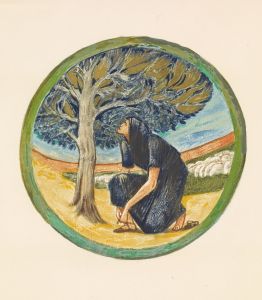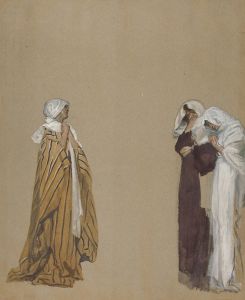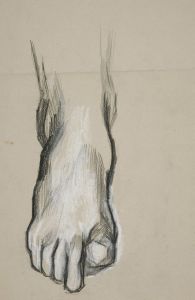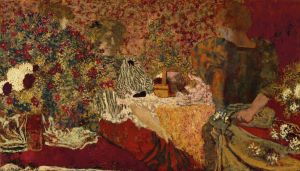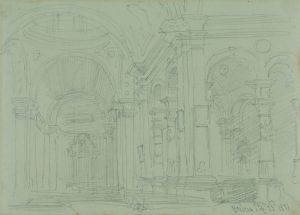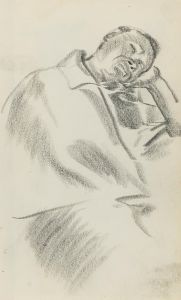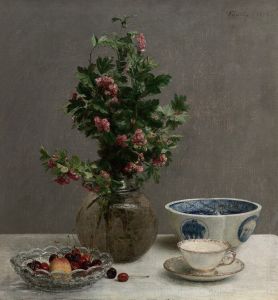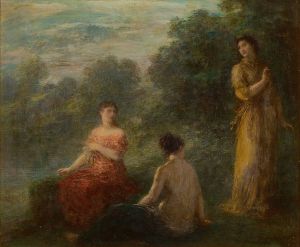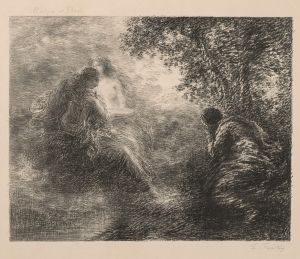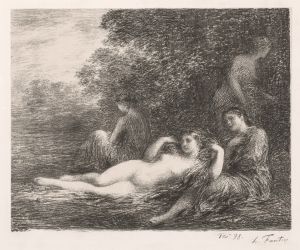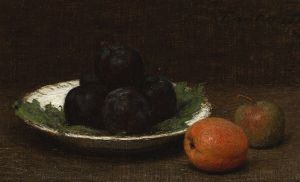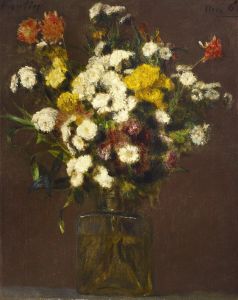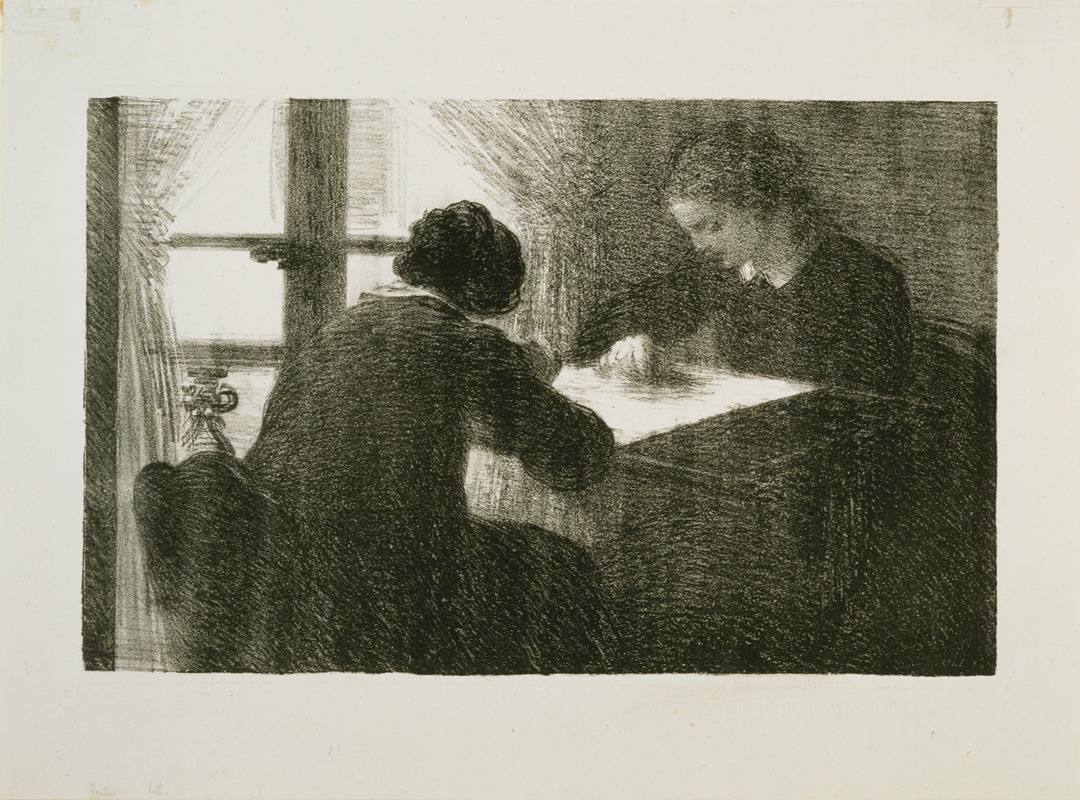
The Embroiderers, No. 2
A hand-painted replica of Henri Fantin-Latour’s masterpiece The Embroiderers, No. 2, meticulously crafted by professional artists to capture the true essence of the original. Each piece is created with museum-quality canvas and rare mineral pigments, carefully painted by experienced artists with delicate brushstrokes and rich, layered colors to perfectly recreate the texture of the original artwork. Unlike machine-printed reproductions, this hand-painted version brings the painting to life, infused with the artist’s emotions and skill in every stroke. Whether for personal collection or home decoration, it instantly elevates the artistic atmosphere of any space.
Henri Fantin-Latour, a French painter renowned for his still lifes and portraits, created The Embroiderers, No. 2 in 1877. This painting is an example of his ability to capture quiet, intimate moments with a sense of realism and subtle emotional depth. The work depicts two women engaged in the act of embroidery, a domestic and traditionally feminine activity. Fantin-Latour’s attention to detail and his use of soft, diffused lighting lend the scene a serene and contemplative atmosphere.
The composition of The Embroiderers, No. 2 reflects Fantin-Latour's interest in portraying everyday life with a sense of dignity and refinement. The two women are seated close to one another, their heads slightly bowed as they focus on their work. Their expressions are calm and introspective, emphasizing the meditative quality of their task. The subdued color palette, dominated by earthy tones and gentle contrasts, enhances the painting's tranquil mood.
Fantin-Latour was influenced by both the Realist and Symbolist movements, and his works often bridge the gap between these styles. While The Embroiderers, No. 2 is grounded in realism through its detailed depiction of the figures and their surroundings, it also conveys a sense of timelessness and introspection that aligns with Symbolist ideals. The painting does not include extraneous details, allowing the viewer to focus entirely on the figures and their activity.
The artist is best known for his still lifes of flowers and his group portraits of contemporary artists and writers, such as A Studio at Les Batignolles (1870) and Homage to Delacroix (1864). However, his genre scenes, such as The Embroiderers, No. 2, demonstrate his versatility and his ability to capture the quiet beauty of ordinary moments. These works often reflect his preference for intimate, indoor settings and his skill in rendering textures and light.
Fantin-Latour's work was well-received during his lifetime, particularly in England, where he exhibited regularly at the Royal Academy. His paintings were admired for their technical precision and their ability to evoke a sense of calm and introspection. Today, The Embroiderers, No. 2 is considered a fine example of his genre scenes, showcasing his mastery of composition, light, and mood.
The painting is currently housed in the Musée d'Orsay in Paris, France, where it is part of the museum's extensive collection of 19th-century art. It remains a testament to Fantin-Latour's ability to find beauty in the everyday and to elevate simple, domestic scenes into works of art.





